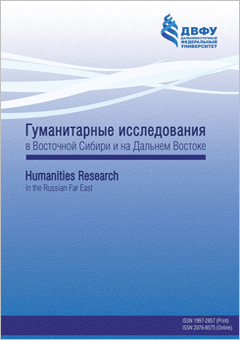Risshō Kōsei Kai on Sakhalin: the history and present day of a Japanese Buddhist community
DOI:
https://doi.org/10.24866/1997-2857/2025-3/16-22Keywords:
Risshō Kōsei Kai, neo-Buddhism, Sakhalin, religious community, Lotus Sutra, hōzaAbstract
The article is devoted to the study of the history and current state of the Japanese Buddhist organization Risshō Kōsei kai in Sakhalin. Drawing upon field research materials, the author reconstructs the process of the community's formation, which began in 1992 with a visit by Japanese missionaries, and identifies the key milestones of its institutionalization. These include gaining administrative independence from the Japanese headquarters in 2006 and acquiring its own temple in 2012. The study analyzes the external and internal challenges the community faces at the present stage: the aging and decline in its membership, legislative restrictions on missionary activity in Russia, and the impact of the COVID-19 pandemic. The author highlights the flexibility and adaptability of the community of believers, which successfully transitioned to an online format for conducting hōza sessions and study seminars, thereby preserving its group identity and interpersonal connections.
Downloads
References
1. Агаджанян А.С. Необуддизм // Энциклопедия религий. М.: Академический проект; Гаудеамус, 2008. С. 861.
2. Гришачев С.В. Японское губернаторство Карафуто (1905–1945): история и социальная память // Ежегодник Япония. 2019. Т. 48. С. 272–286.
3. Игнатович А.Н., Светлов Г.Е. Лотос и политика: необуддийские движения в общественной жизни Японии. М.: Мысль, 1989.
4. Кодекс Российской Федерации об админист-ративных правонарушениях от 30.12.2001 № 195-ФЗ (ред. от 31.07.2025). Статья 5.26. Нарушение законодательства о свободе совести, свободе вероисповедания и о религиозных объединениях. URL: http://www.consultant.ru/document/cons_doc_LAW_34661/ca82e094f1dcf553b6a4bfa7b9a3271b38922c98/
5. Мальцев С.А. Необуддийские практики в условиях культурной трансформации: исследование сахалинского опыта Риссё Косэй-кай // Исторический бюллетень. 2025. Т. 8. № 5. С. 301–308.
6. Сахалинская область усиливает меры по профилактике коронавируса // Официальный сайт губернатора и правительства Сахалинской области. URL: https://sakhalin.gov.ru/index.php?id=105&tx_ttnews%5Btt_news%5D=14439&cHash=b254030c5f90a6c45cb6e3112d4f88e6
7. Хоккайдō-гун «Дайгакусэй Сахарин юкō сисэцу-дан» дōкōки (Очерк о поездке делегации Хоккайдо в рамках студенческой миссии дружбы на Сахалин) // Кōсин симбун. 1992. 15 мая.
8. Japan-Sakhalin Association. URL: http://sakhalin-kyoukai.com/about
9. Morioka, K., 1979. The institutionalization of a new religious movement. Japanese Journal of Religious Studies, Vol. 6, no. 1–2, pp. 239–280.
Downloads
Published
Issue
Section
License
Copyright (c) 2025 Савва Артурович МАЛЬЦЕВ

This work is licensed under a Creative Commons Attribution-NonCommercial-NoDerivatives 4.0 International License.















